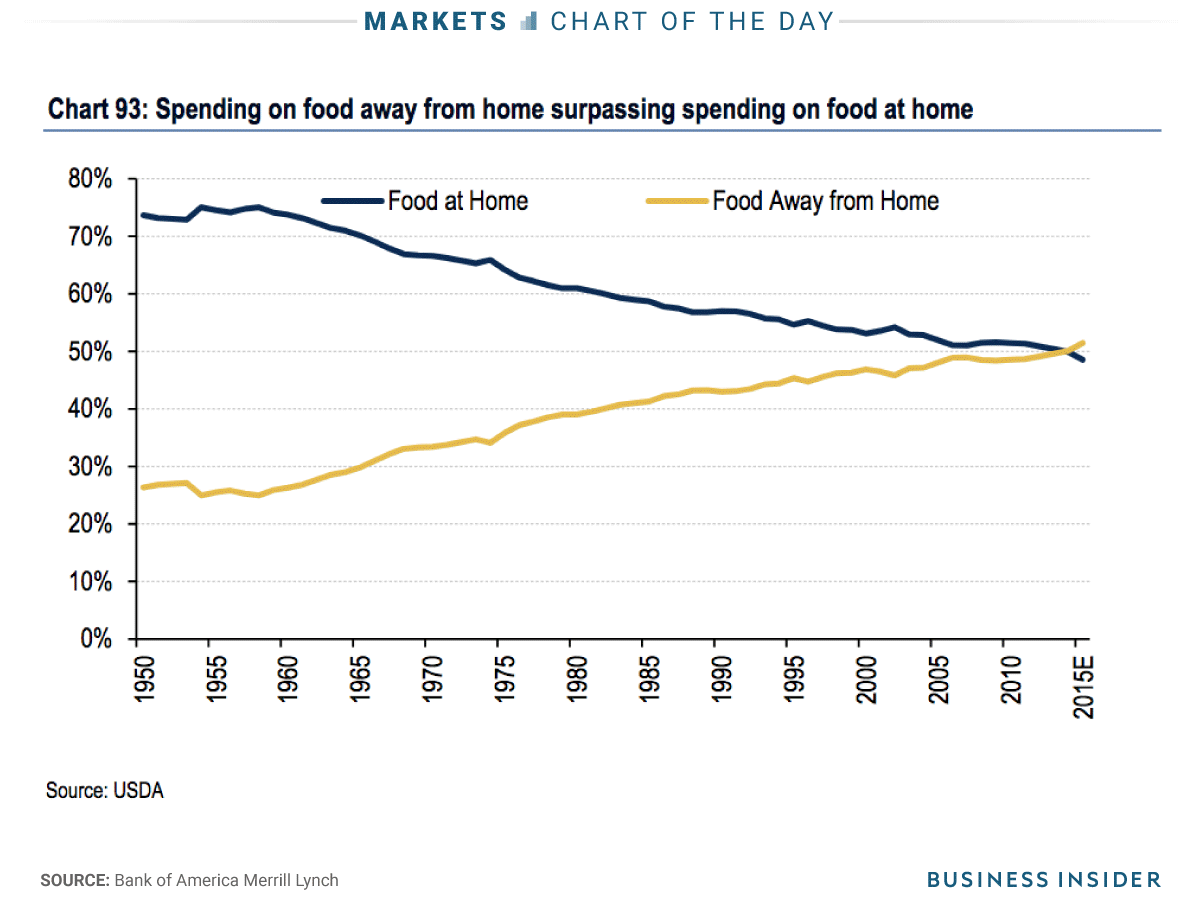Americans like to eat out. A lot.
In fact, the portion of food spending outside the home is estimated to have eclipsed the portion spent on food at home for the first time around 2014, according to data from the USDA.
The trend can be seen in this chart, which was shared by a Bank of America Merrill Lynch team led by equity strategist Felix Tran.
Spending on food away from home has been steadily increasing for decades, while spending on food at home has been going in reverse.
The only big reversals in those trends were during recessions in 1974, 2001, and 2008. It's generally more expensive to eat out than at home, and people are less likely to spend extra cash in tougher economic environments.
"The trend is caused by a variety of long-term demographic and psychological reasons, but many of them boil down to convenience," Stifel's Taylor G. LaBarr argued last year. "Eating out is simply easier and increasingly attractive as we lead busier lives."
It's also likely that as standards of living increased in the last 60-plus years, more and more Americans have disposable income for eating out.

